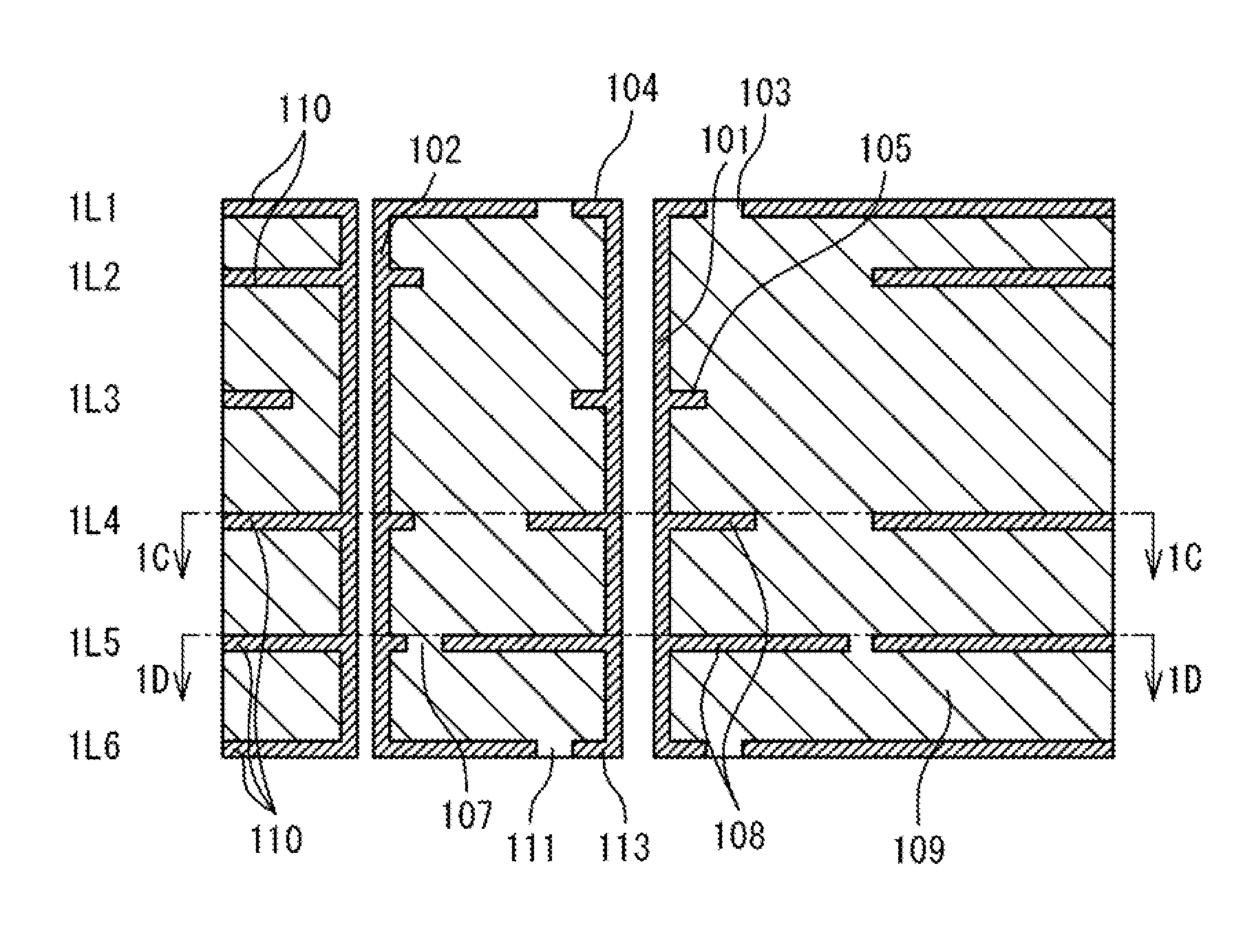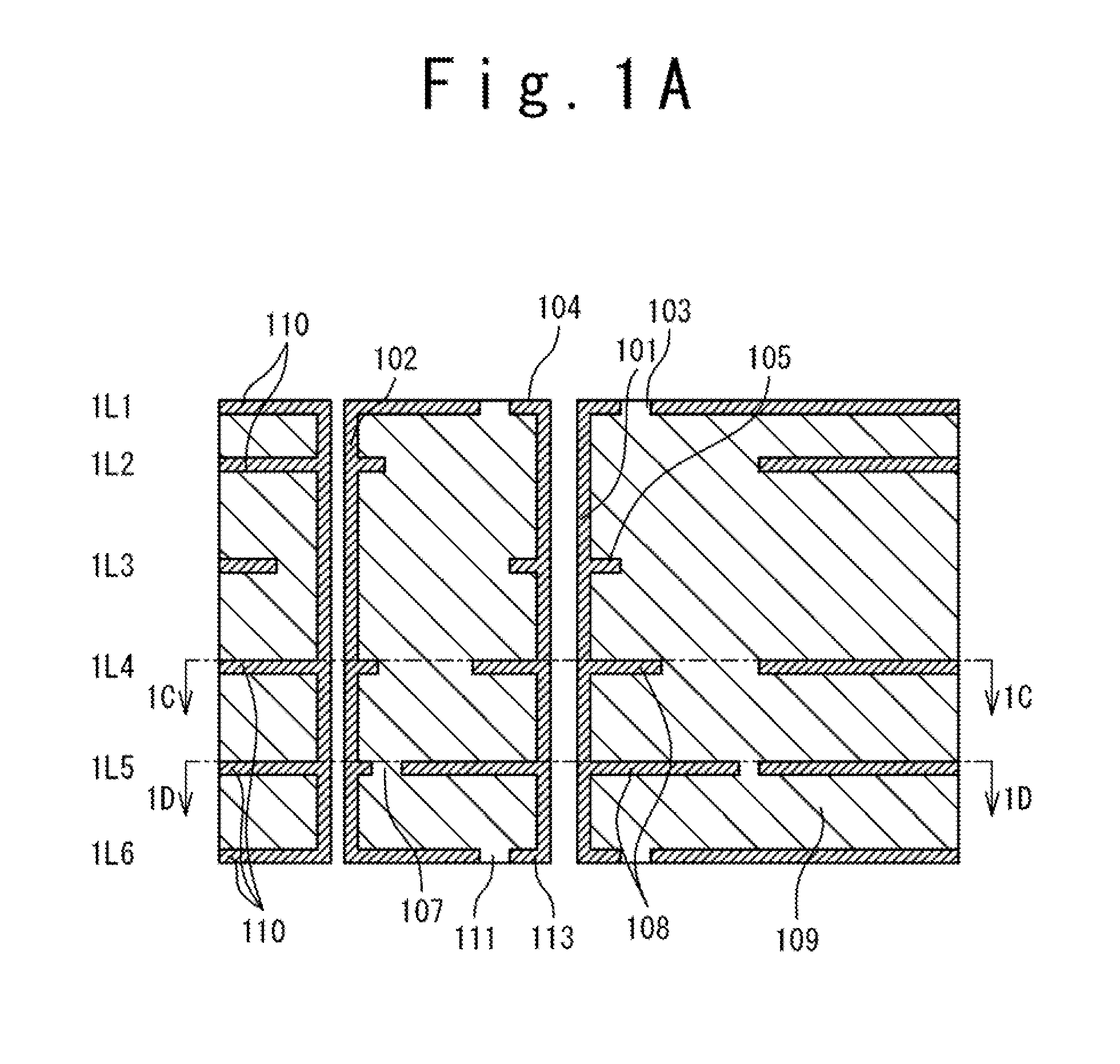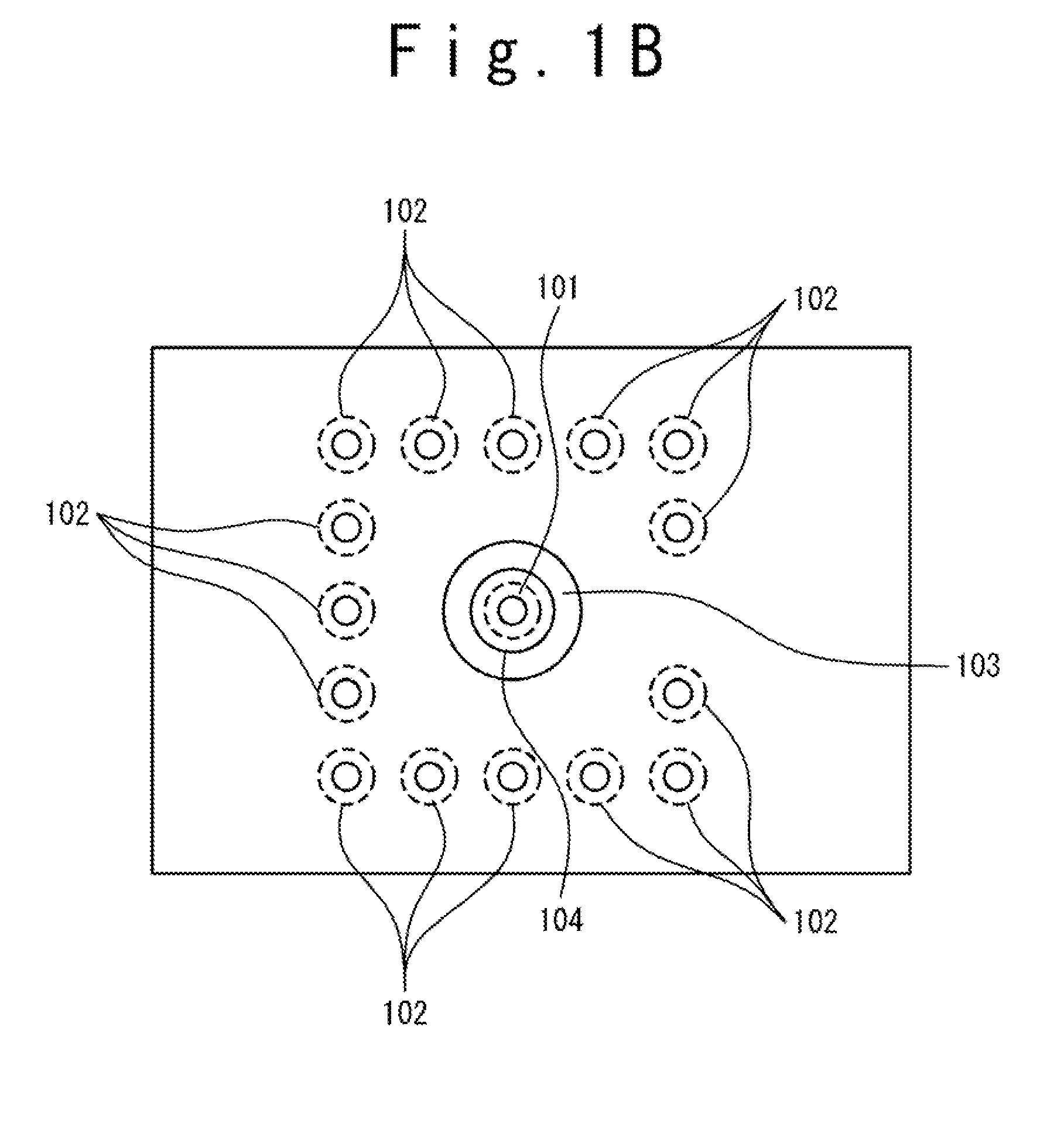Filter based on a combined via structure
- Summary
- Abstract
- Description
- Claims
- Application Information
AI Technical Summary
Benefits of technology
Problems solved by technology
Method used
Image
Examples
Embodiment Construction
[0064]Hereinafter, several types of combined via structures and compact filters based on these via structures disposed in multilayer boards according to the present invention will be described in detail with reference to attached drawings. But, it would be well understood that this description should not be viewed as narrowing the appended claims.
[0065]In FIGS. 1A to 1E, an exemplary embodiment of a combined via structure in a multilayer board is shown. This multilayer board is provided with a plurality of conductor layers 1L1 to 1L6. Six conductor layers 1L1 to 1L6 are isolated by a dielectric material 109. Conductor layers 1L1, 1L2, 1L4, 1L5 and 1L6 serve as ground layers. Conductor layer 1L3 serves as signal transmitting layer.
[0066]Note this six conductor layer board is only an example of multilayer boards and a number of conductor layers, filling material and other board parameters can be different that depends on real applications.
[0067]In present embodiment, the combined via ...
PUM
 Login to view more
Login to view more Abstract
Description
Claims
Application Information
 Login to view more
Login to view more - R&D Engineer
- R&D Manager
- IP Professional
- Industry Leading Data Capabilities
- Powerful AI technology
- Patent DNA Extraction
Browse by: Latest US Patents, China's latest patents, Technical Efficacy Thesaurus, Application Domain, Technology Topic.
© 2024 PatSnap. All rights reserved.Legal|Privacy policy|Modern Slavery Act Transparency Statement|Sitemap



